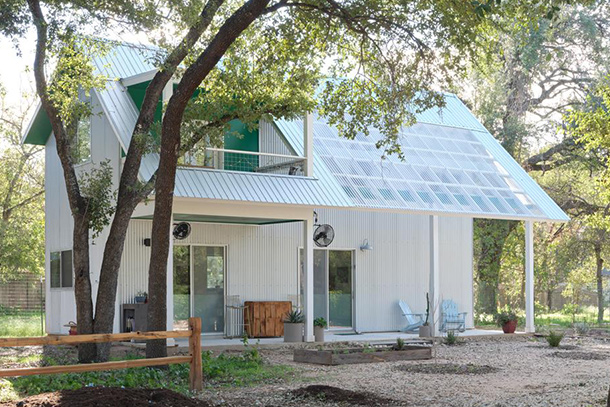
Low Design Office's Mishpocha Woods Eco-Compound in Austin, Texas won a 2024 Design Award of Excellence from the American Institute of Architects-Austin and was highlighted in a Forbes magazine article on affordable housing. Penn State architecture and engineering design professor DK Osseo-Asare is a co-founder of the firm. Credit: Leonid Furmansky.
Architecture, engineering professor’s firm earns Walton Family Foundation nod
Apr 11, 2025
Editor's note: This article originally appeared on Penn State News.
UNIVERSITY PARK, Pa. — Low Design Office (LowDO), a Texas- and Ghana-based architecture firm co-founded by Penn State architecture and engineering design professor DK Osseo-Asare, has been selected by the Walton Family Foundation as one of the 45 design firms to join its Northwest Arkansas Design Excellence Program.
Established in 2015, the Northwest Arkansas Design Excellence Program promotes “the highest level of design in the development of public buildings and spaces in Arkansas’ Benton and Washington counties,” according to the Walton Family Foundation website. Selection of design firms for the program is based on four principles: commitment to strengthening public life, elevating standards of sustainability and resilience, celebrating local cultures and places, and building regional capacity. Firms selected for the program receive funding from the foundation for projects “that foster connections and inspire a sense of belonging” and remain in the program for five years or until they are selected for a project.
Osseo-Asare, associate professor of architecture in the College of Arts and Architecture’s Stuckeman School and associate professor of engineering design in the College of Engineering’s School of Engineering Design and Innovation, co-founded LowDO in 2006 with Ryan Bollom while they were graduate students at the Harvard Graduate School of Design. As founders and principals of the firm, their work searches to find an optimal balance between design and resource consumption — to achieve the “most” with the “least” — and explores the links between sustainability, technology and geopolitics.
“We have tremendous respect for the important work that the Walton Family Foundation does around securing the environment and centering communities in development, particularly their bioregional approach to making ‘home’ a healthy, productive and inclusive geography of opportunity,” Osseo-Asare said. “The foundation’s decision to include LowDO in the Northwest Arkansas Design Excellence Program is a real honor for us, especially as the cohort announced this year has produced a lot of the work propelling architecture forward globally.”
LowDO has earned international recognition as a winner of The Architectural League of New York’s Emerging Voices 21 competition and as being named one of the 50 best emerging architecture practices in the world Domus magazine in 2020. It was featured in Architect magazine’s “Next Progressives” list in 2019, was a finalist for the Museum of Modern Art (MoMA) and MoMA PS1 Young Architects Program that same year, and was recognized as an emerging architecture firm in the December 2017/January 2018 issues of Architectural Review.
More recently, LowDO won a 2024 Design Award of Excellence from the American Institute of Architects-Austin chapter for its Mishpocha Woods Eco-Compound in Austin, Texas. The project was recently highlighted in a Forbes magazine article on affordable housing.
Osseo-Asare, who was selected as a recipient of the national 2024 United States Artists Fellowship, and Bollom also took part in a conversation co-hosted by The Architectural League of New York at Rice University on March 8 that featured past winners of the league’s Emerging Voices and League Prize programs.
At Penn State, Osseo-Asare holds a triple appointment in humanitarian materials triangulating the Stuckeman School, the School of Engineering Design and Innovation, and the Materials Research Institute. He is the director of the Humanitarian Materials Lab, where his work centers on the reuse and recycling of materials to create low-carbon structures, and he is an affiliate to the Materials Matters research cluster and the Stuckeman Center for Design Computing.

